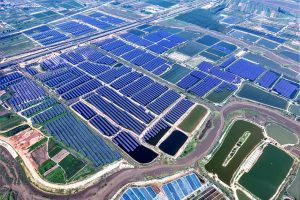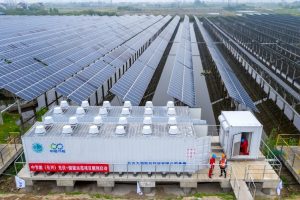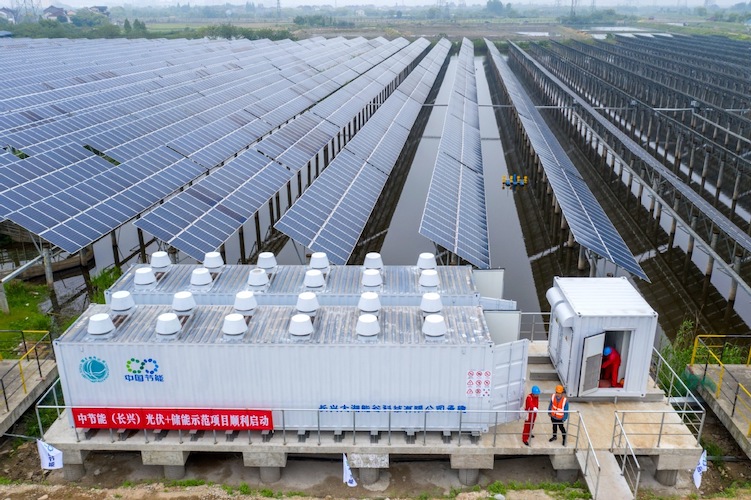China is currently building more solar and wind power capacity than the rest of the world combined — a feat that has pushed the country’s coal use to a record low, new research shows.
China is building 339 gigawatts (GW) of utility-scale wind and solar, or 64% of the global total, a report from US-based think tank Global Energy Monitor (GEM) found.
That is more than eight times the project pipeline of the second-place US, with 40 GW.
Also on AF: China Shifting to ‘Green’ Steel Production as EU Levy Looms
China’s pace puts the global goal to triple renewable capacity by the end of 2030 “well within reach” even without more hydropower, the report’s authors said, calling on China to lift its targets in climate pledges to the UN next year.
Beijing is also on track to meet its own 2030 goal to install 1,200 GW of wind and solar by this month – six years early – Sydney-based think tank Climate Energy Finance said last week.
A key challenge, however, would be absorbing the boom in renewables as China’s coal-centred grid runs into capacity and storage issues.
China will need to develop more transmission lines faster, GEM research analyst Aiqun Yu said.
Still, the new capacity pushed renewable generation to record highs recently, according to a separate analysis published by Carbon Brief on Thursday.
Coal-based power at record low
Solar accounted for 12% of China’s power generation in May and wind accounted for 11% thanks to large amounts of new capacity. Hydropower made up for 15%, nuclear 5% and biomass 2% in other sources of non-fossil fuel power.
That would mean a record 44% of China’s electricity came from non-fossil fuel sources.
Meanwhile, power-generation from coal was 53% in May, a record low.
Those numbers indicate China’s carbon emissions may have peaked last year if the trend continues, according to the analysis conducted by Lauri Myllyvirta, senior fellow at Asia Society Policy Institute.
Coal’s share was down from 60% in May 2023.
The increased renewable generation led carbon dioxide emissions from the power sector, which make up some 40% of China’s overall emissions, to fall 3.6% in May.
“If current rapid wind and solar deployment continues, then China’s CO2 output is likely to continue falling, making 2023 the peak year for the country’s emissions,” Myllyvirta wrote.
- Reuters, with additional editing by Vishakha Saxena
























